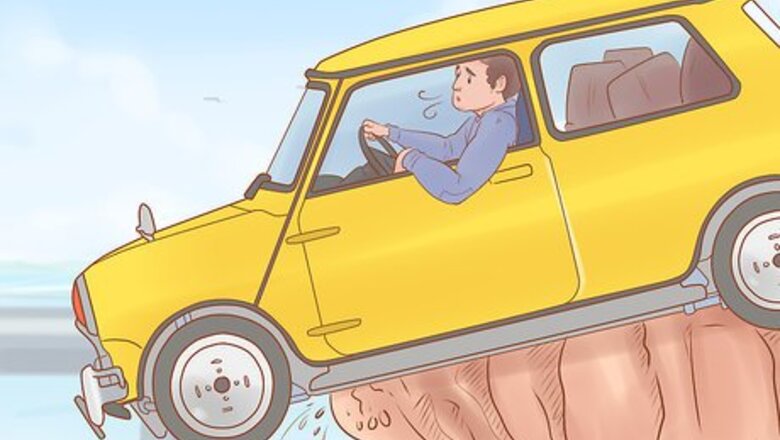
views
Braking the Car
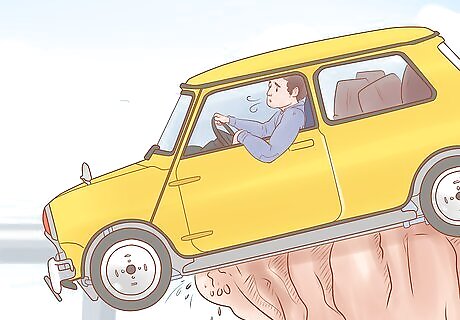
Stay calm. Hanging on the edge of a cliff can be terrifying but the calmer you are, the clearer your head will be while you escape. If you start to panic, take a deep breath and try to focus on your surroundings while you prepare to evacuate the car. Try not to make any rash movements. Unless your car is currently rolling off the cliff, take a few minutes to plan your escape.

Stop what you're doing if you feel or hear slight movements. If you feel, hear, or see a slight movement, stop what you're doing immediately. Although your instincts might tell you to jump out of the car, this may accidentally accelerate the car and push it off the cliff faster. Staying still during small movements is especially important if there are other passengers in the car. Even if you jump out of the car, they may not react in time to escape the sudden acceleration. If you detect a more pronounced movement or movement that doesn't immediately stop, escape as quickly as possible while alerting the other passengers.
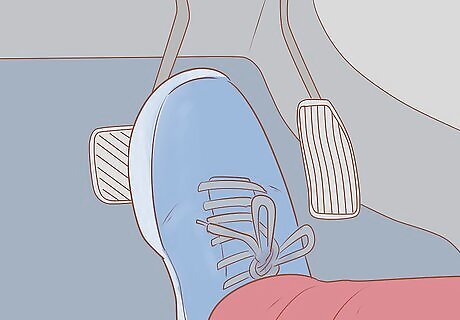
Keep your foot on the brake. If you came to a rest with your foot on the brake pedal, leave it on until you can set the parking brake. Your brakes may be the only thing preventing the wheels from rolling down the cliff.
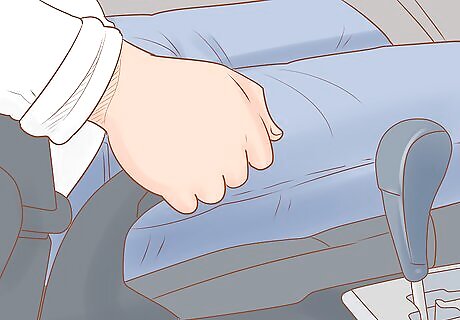
Set the parking brake. Pull the brake handle slowly, stopping if you detect any slight movement. Once you've turned on the parking brake, remove your foot from the brake pedal while again watching for movements. In some cars, the parking brake will only work on the rear wheels. If you notice movement when you lift your foot from the brake pedal, find a large and heavy object to weigh the brake down while you escape. You could, for example, place a large, heavy backpack or antifreeze bottle over the brake pedal if your parking brake only works on rear wheels.
Shifting the Center of Balance
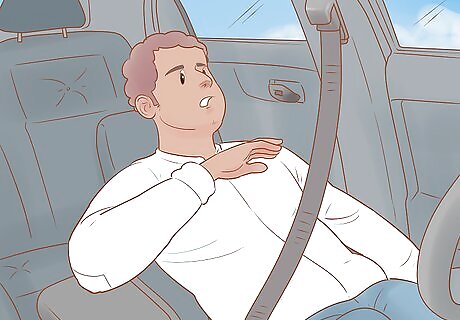
Recline your seat back. Reclining your seat will shift the center of gravity from the car's engine towards the back of the car. Once you've secured the brakes, find your seat's recline button and pull it back to prevent a weight imbalance while you move. This will reduce the chances of the car tipping forward and rolling off of the cliff's edge.
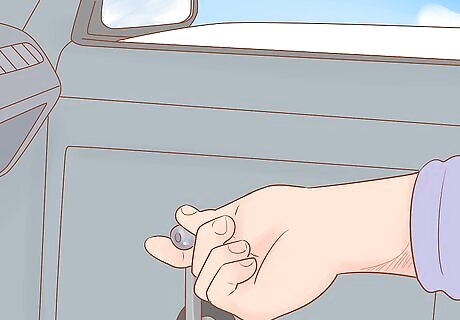
Open your car windows. Roll down every car window in the front and back seats, asking the passengers for help if applicable. This will give you and your passengers more escape options if you cannot reach the a door near the ground or the car starts moving suddenly. If you won't be able to roll the window down and can't reach a safe door, smash the windows with a small object like a wrench or screwdriver.
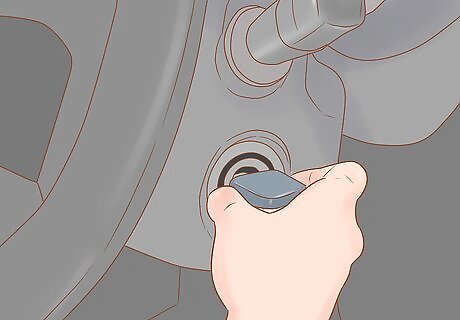
Turn off the vehicle and unlock the doors. Turning the car off will prevent any sudden movements or vibrations while you escape through the exits. Take time with any passengers to unlock any doors so you can quickly evacuate the car. If you do not take time to unlock the doors, you or another passenger may try to force one open and cause sudden movements. Unlocking all of the doors is also important if some of your passengers are children and may not remember to do so themselves.
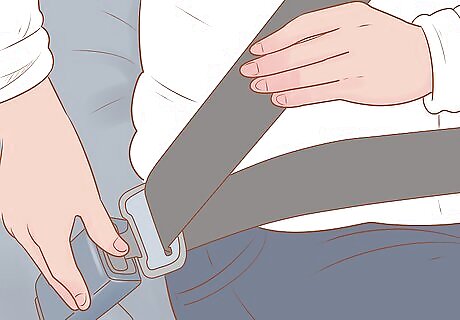
Take off your seat belt. Before you begin to exit the car, unbuckle your seat belts so you can escape easily. If you have any children in the car, help them and any passengers who need assistance unbuckle their seat belts.
Evacuating the Car
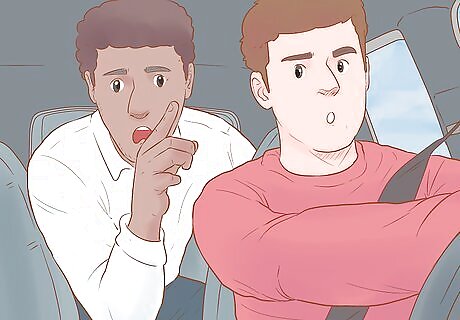
Plan an exit route out of the vehicle with your fellow passengers. Discuss the best direction with all of the passengers in the car and step towards the exit together. To prevent sudden movements, plan an exit line from the passengers nearest the cliff's edge to passengers nearest stable ground.
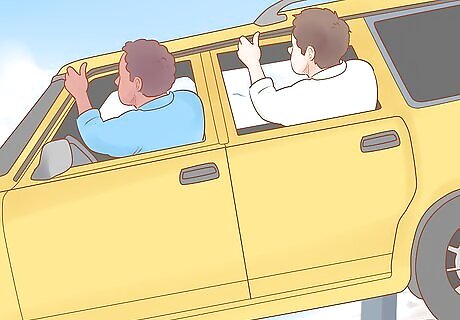
Move in unison with the other passengers. If you have multiple passengers in the car, plan on moving at the same time. If you and your passengers can exit simultaneously (from side doors near your seat, for example), go through the exits at the same time if possible. Do not carry anything (except infants or small children) with you out of the vehicle. Carrying items with you can interfere with your balance and cause accidental movements. This will help the car maintain better balance as everyone exits the car.
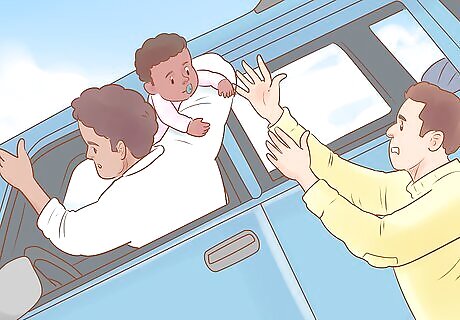
Help young passengers through the exits. If you have any infants or small children in the car, wait until at least one adult passenger has exited the car. Pass them through the window or door to the adult to ensure that they exit safely from the car. If only one adult passenger is in the car, reach out the door or window to place the child on the car or carefully toss them towards a bush or patch of grass away from the cliff. Work slowly while helping small children and infants out of the car to prevent sudden vehicle shifts.
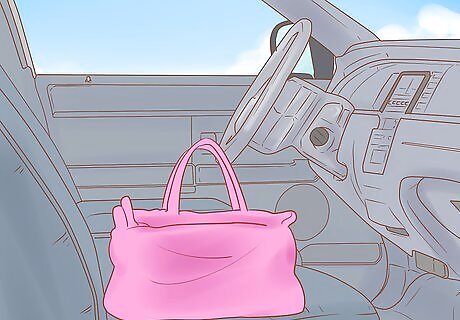
Leave everything in the car behind. Once you and all other passengers have exited the car, do not try to retrieve anything from the car. When emergency personnel arrives on the scene, they may be able to rescue any important items. Nothing, not even survival kits, cell phones, or IDs, are worth returning to the vehicle for.
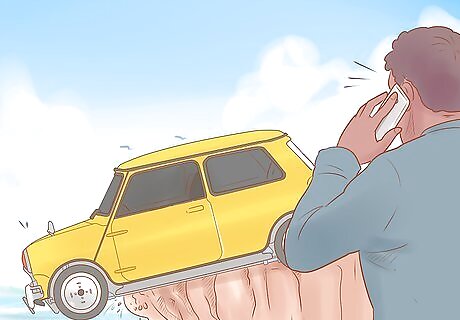
Move as far away from the cliff as possible. With your fellow passengers, step away from the car and find somewhere safe far from the cliff's edge. If you or another passenger has a cell phone, call emergency services for rescue.











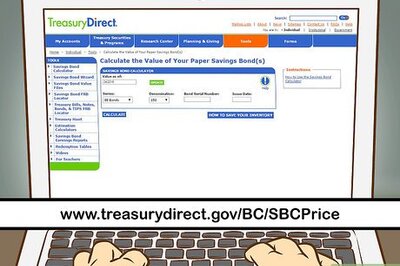

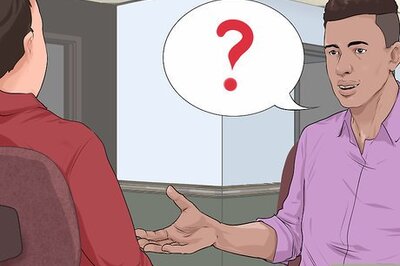


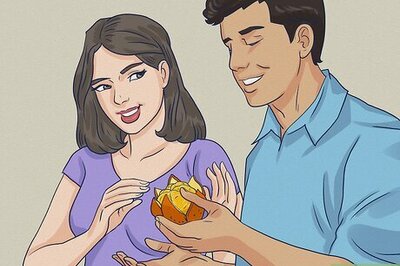

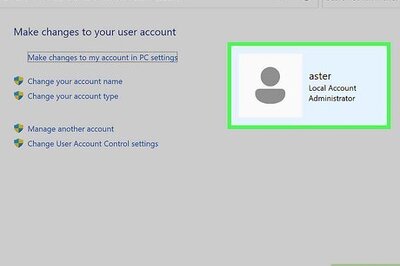
Comments
0 comment